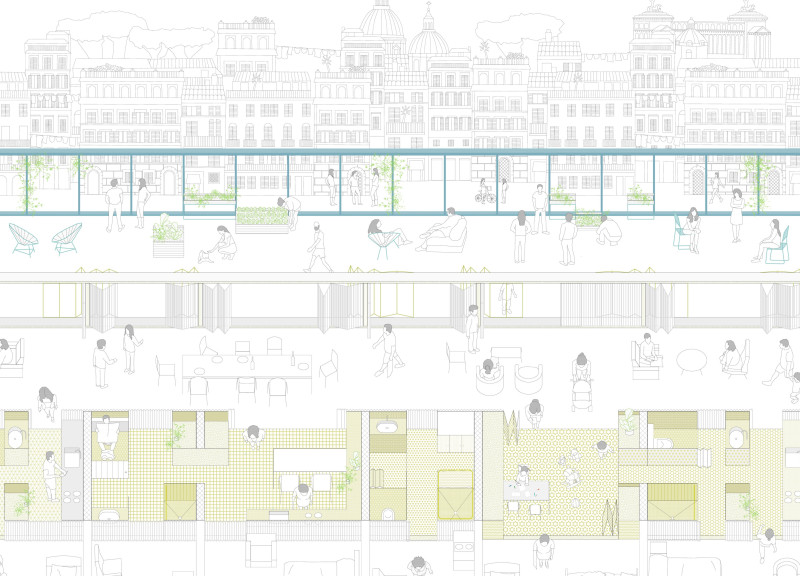5 key facts about this project
The project addresses the need for adaptable living spaces in urban settings, particularly in Rome. It aims to change the traditional concept of a home by introducing a design that allows for flexible spatial organization. This flexibility promotes interaction among residents and reflects the way people live today. By transforming fixed barriers into adjustable systems, the design supports varying levels of privacy and community engagement.
Configurations of Space
The design includes four different screen configurations: private, shared, and public spaces. Each of these allows residents to shape their environment based on personal preferences and social situations. The "Private" configuration offers a high level of solitude, providing a space for personal retreat. The "Shared" configuration fosters collaboration and moderate privacy, while the "Public" configuration encourages openness and community interaction. This variety in spatial arrangements accommodates different lifestyles and living requirements.
Sustainability Initiatives
Sustainability plays a central role in the design, evident in the choice of materials and environmental strategies. A modular wooden structure forms the basis of the design, ensuring strength and allowing for changes in layout over time. Straw thermal insulation is chosen to improve energy efficiency, offering effective thermal performance while being eco-friendly. Additional cladding with corrugated metal sheets enhances durability and gives the project a contemporary look that fits well in an urban environment.
Water Management
The approach to water management emphasizes ecological responsibility. The design includes systems to separate black water from gray water, making drainage into the urban sewage network more efficient. Rainwater collection is also part of the plan, allowing for irrigation in nearby vegetable gardens. This strategy not only promotes food self-sufficiency but also aligns with the overall goals of sustainability and responsible resource use.
Cultural Context and Community Integration
Set against the backdrop of a city with many abandoned buildings, the design seeks to revitalize existing structures through adaptive reuse. The goal is to improve housing options while maintaining architectural heritage. Specific case studies highlight practical applications, such as reconfiguring spaces in Rione Monti to meet co-housing needs, providing affordable living solutions. This focus on enhancing living conditions in socially challenging areas reflects a commitment to responsive architectural solutions.
The integration of flexible living arrangements and sustainable practices encourages a connection between nature and urban life. The inclusion of vegetable gardens adds a layer of community involvement, fostering relationships among residents and reinforcing a sense of belonging. Each detail contributes to an environment that supports both individual and collective needs.



























